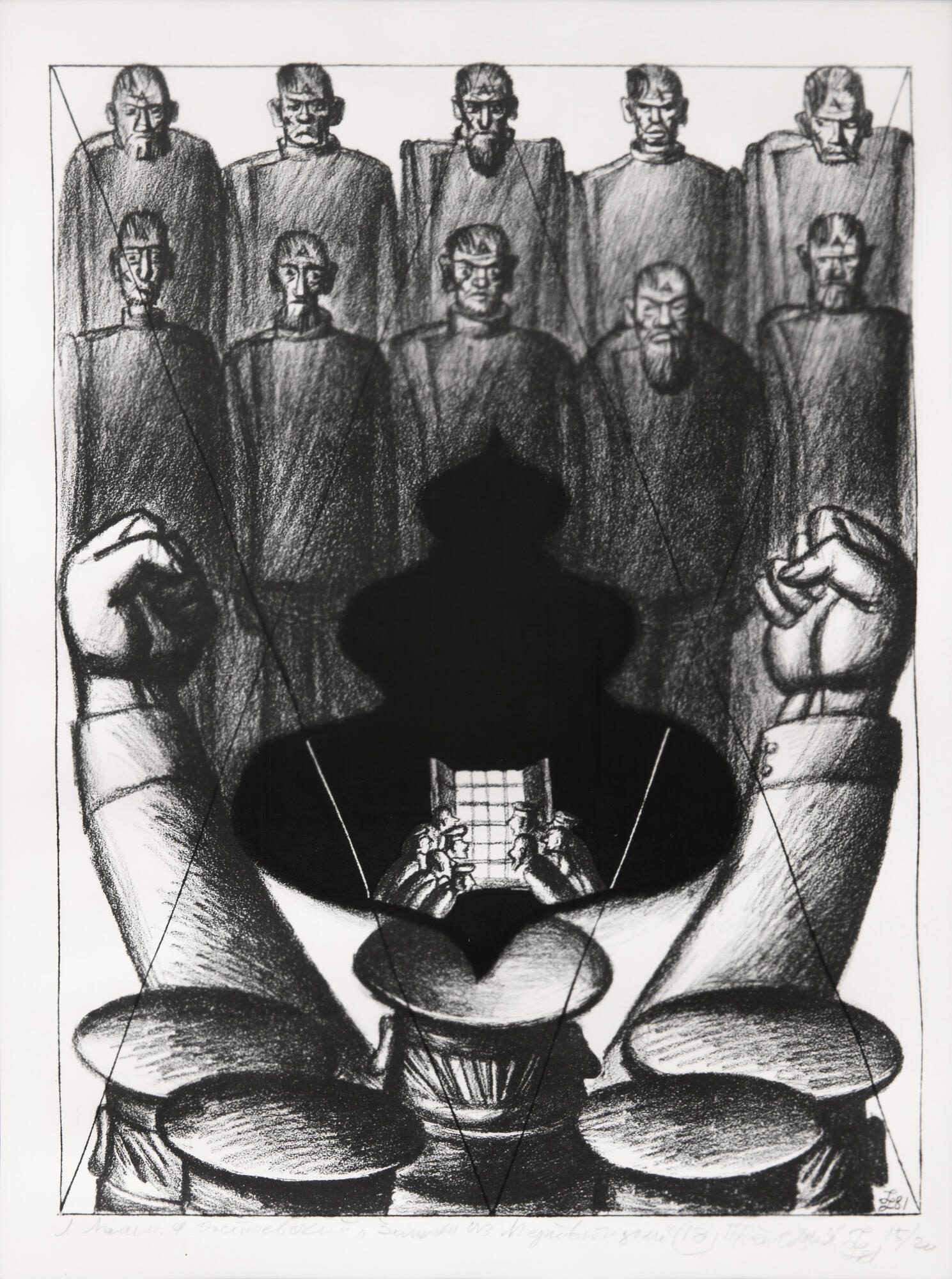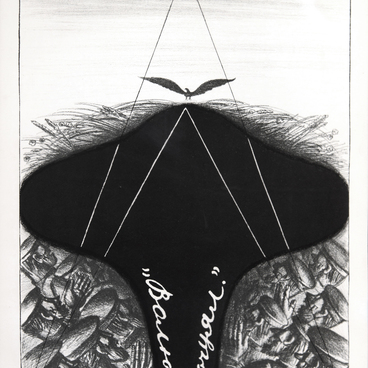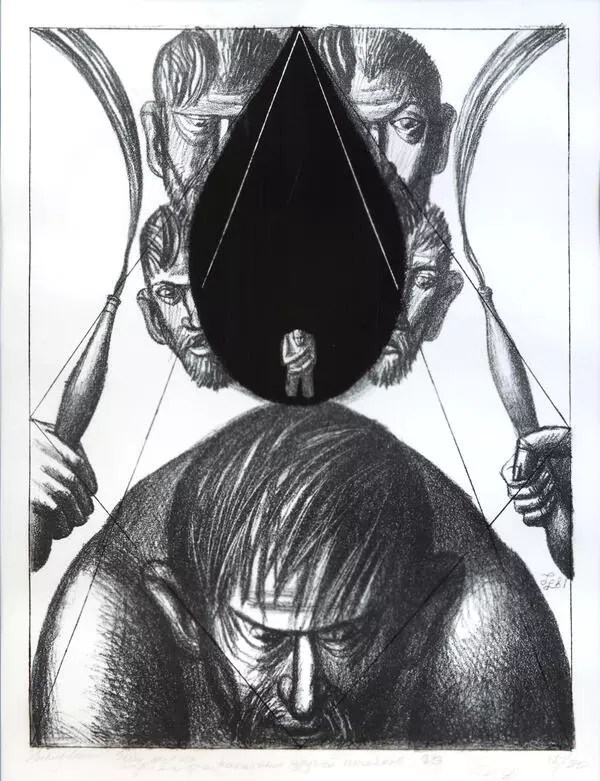Autolithograph ‘Complaint’ is one from the series of illustrations for FyOdor DostoEvsky’s novel “Memoirs from the House of the Dead”.
LeonId Lamm was born in Moscow in 1928. His illustrations for the “House of the Dead” were inspired by his own imprisonment. The artist spent three years in prison after being arrested when attempting to immigrate from the USSR and accused of political disloyalty. In 1982, Lamm managed to move to the USA.
In the upper part of the picture, there are two lines of male silhouettes with a pitch “KAT” [Russian: 'katorga' (prison)] on their faces. In the middle are a barred window and human silhouettes left and right of the window. The autolithograph illustrates the episode of the novel in which convicts complained to the prison authorities about awful food and conditions in barracks.
LeonId Lamm was born in Moscow in 1928. His illustrations for the “House of the Dead” were inspired by his own imprisonment. The artist spent three years in prison after being arrested when attempting to immigrate from the USSR and accused of political disloyalty. In 1982, Lamm managed to move to the USA.
In the upper part of the picture, there are two lines of male silhouettes with a pitch “KAT” [Russian: 'katorga' (prison)] on their faces. In the middle are a barred window and human silhouettes left and right of the window. The autolithograph illustrates the episode of the novel in which convicts complained to the prison authorities about awful food and conditions in barracks.
Here is how the episode is portrayed in the novel, “The Major had come up, spectacles and all, looking as wicked as might be, towering with passion, red as a turkey-cock. He came on without a word, and in a determined manner, right up to the line of the convicts. In conjunctures of this sort he showed uncommon pluck and presence of mind; but it ought not to be overlooked that he was nearly always half-seas over. Just then his greasy cap, with its yellow border, and his tarnished silver epaulettes, gave him a Mephistophelic look in my excited fancy. Behind him came the quartermaster, Diatloff, who was quite a personage in the establishment, for he was really at the bottom of all the authorities did. He was an exceedingly capable and cunning fellow, and wielded great influence with the Major. He was not by any means a bad sort of man, and the convicts were, in a general way, not ill-inclined towards him. Our sergeant followed him with three or four soldiers, no more; he had already had a tremendous wigging, and there was plenty more of the same to come, if he knew it. The convicts, who had remained uncovered, cap in hand, from the moment they sent for the Major, stiffened themselves, every man shifting his weight to the other leg; then they remained motionless, and waited for the first word, or the first shout rather, to come from him. They had not long to wait. Before he had got more than one word out, the Major began to shout at the top of his voice; he was beside himself with rage. We saw him from the windows running all along the line of convicts, dashing at them here and there with angry questions. As we were a pretty good distance off, we could not hear what he said or their replies. We only heard his shouts, or rather what seemed shouting, groaning, and grunting beautifully mingled. “Scoundrels! Mutineers! to the cat with ye! Whips and sticks! The ringleaders? You”re one of the ringleaders! ” throwing himself on one of them”.








